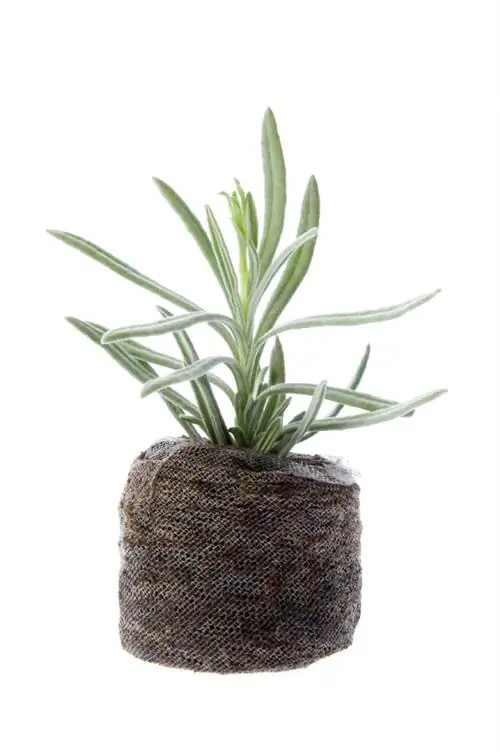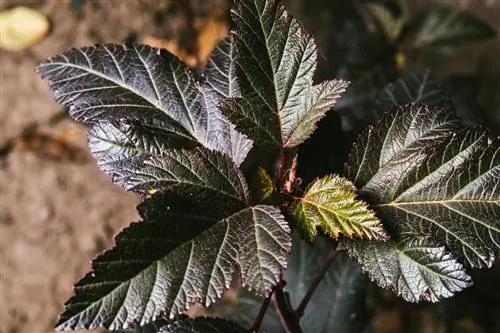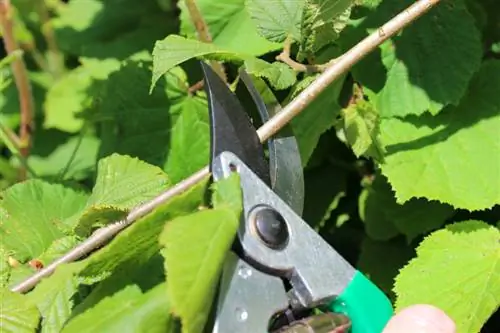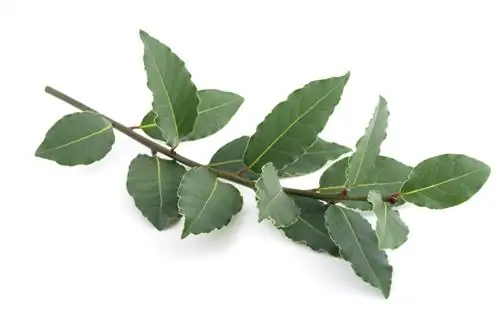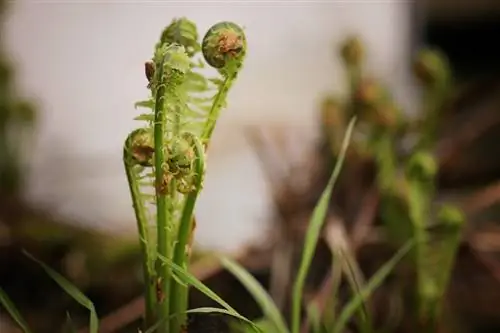- Author admin [email protected].
- Public 2023-12-16 16:46.
- Last modified 2025-06-01 06:02.
The best time to propagate lavender is spring or summer. However, you should cut the lavender cuttings at the end of July at the latest, as they need at least six weeks to take root. Lowering plants, on the other hand, should only be planted in spring, as they can only be separated from the mother plant after three months at the earliest.
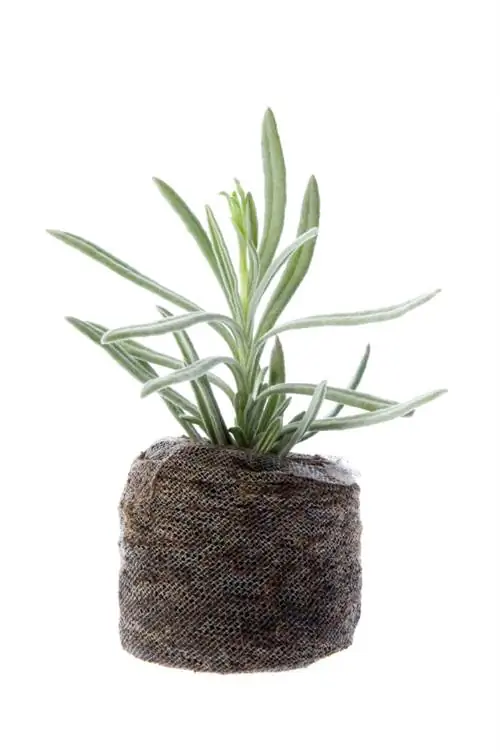
How do I propagate lavender through cuttings?
To successfully propagate lavender cuttings, choose young, 10-15 cm long shoots and cut them off at an angle. Then dip the cut surface in rooting hormone and plant it in potting soil. After 6-8 weeks, the rooted cuttings can be transplanted.
Propagate lavender with cuttings
Lavender is quite easy to propagate from cuttings. In many cases it is better to take cuttings from an old, woody lavender bush and then either cut the mother plant back properly - "rejuvenate" as the gardener says - or remove it completely. When propagating the cuttings yourself, proceed as follows:
- Select young, not yet woody shoots with at least two leaf bases.
- These should be between 10 and 15 centimeters long.
- Already woody cuttings are also suitable, but they take longer to root.
- Cut with a clean and sharp knife, not scissors.
- The cutting surface should be slanted so that the shoot can absorb water more easily.
- Dip the cut surface into a rooting hormone (€8.00 at Amazon) (powder).
- Plant the cuttings individually in small pots with nutrient-poor soil (growing soil).
- Water them thoroughly.
- Finally, only water - when the substrate has already dried.
- Place the pot in a warm and sunny place - but not yet in direct sunlight.
- After about six to eight weeks you can transplant the seedling.
Propagate lavender using planters
Instead of cutting off the cuttings, you can also use them as so-called lowering plants. To do this, the cuttings do not have to be cut off, but can remain on the mother plant until they have developed roots themselves.
- Select a flexible, young branch.
- This should be as close to the ground as possible.
- Dig a hole about 10 to 15 centimeters deep at a short distance away.
- Bury the middle of the branch there, with the leaves and flowers sticking out on the other side.
- Weigh down the branch with a stone or something similar so that it doesn't slip out.
- Water the buried branch regularly.
- After about three to four months, the sinker should have developed its own roots and can be separated from the mother plant.
Tips & Tricks
Sometimes the advice is to divide large lavender bushes for propagation. However, this is hardly possible with lavender, after all they are not perennials, but rather woody bushes as they age.

